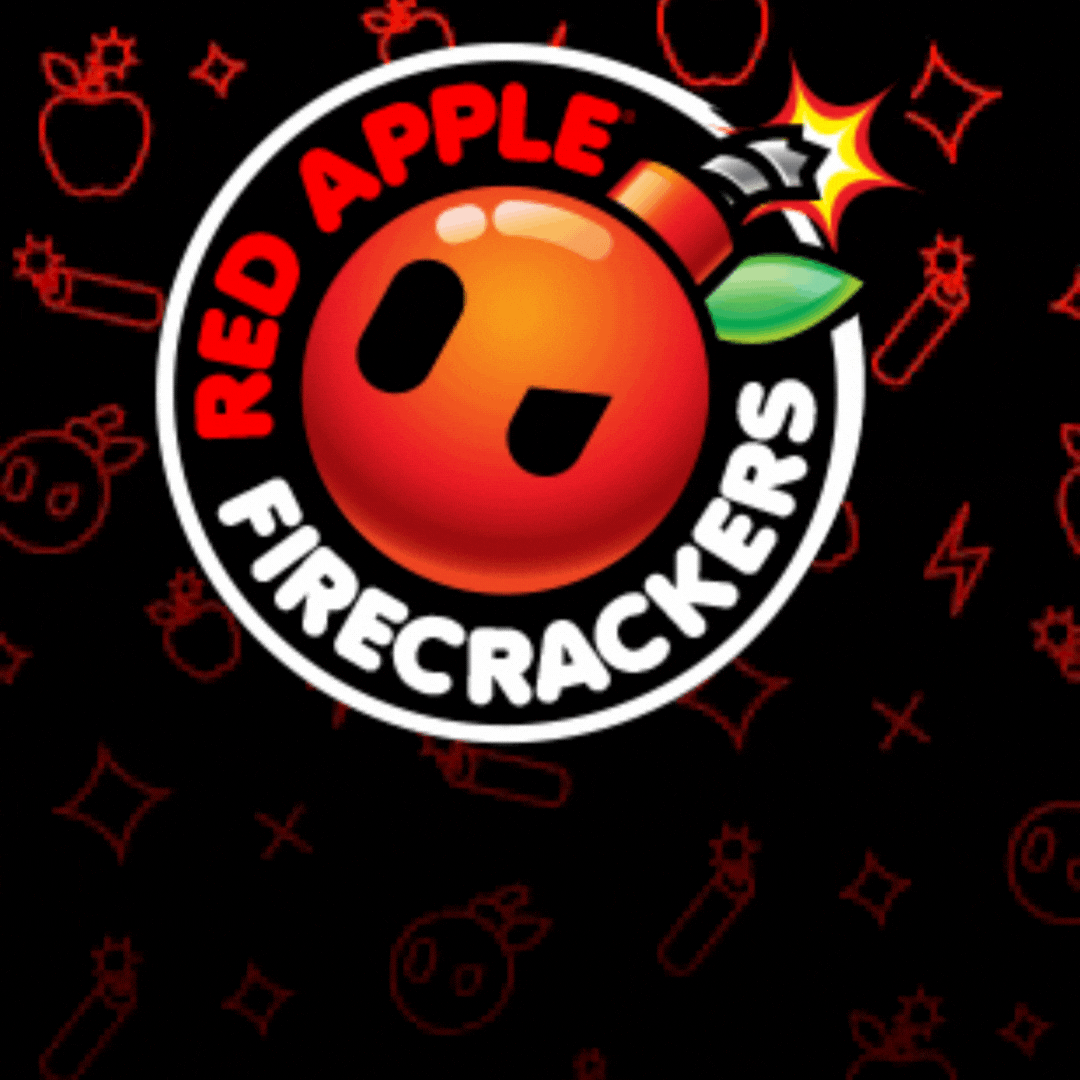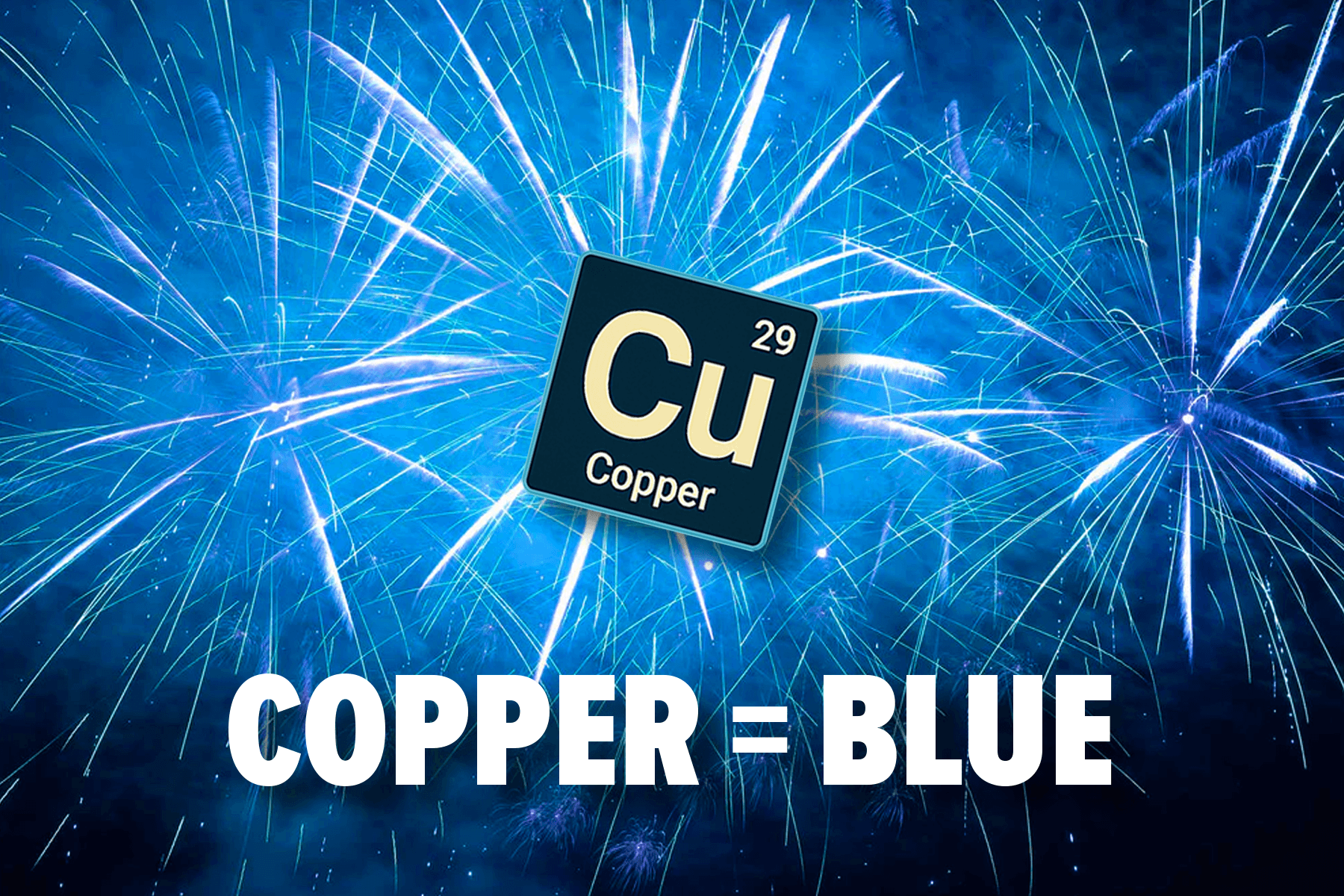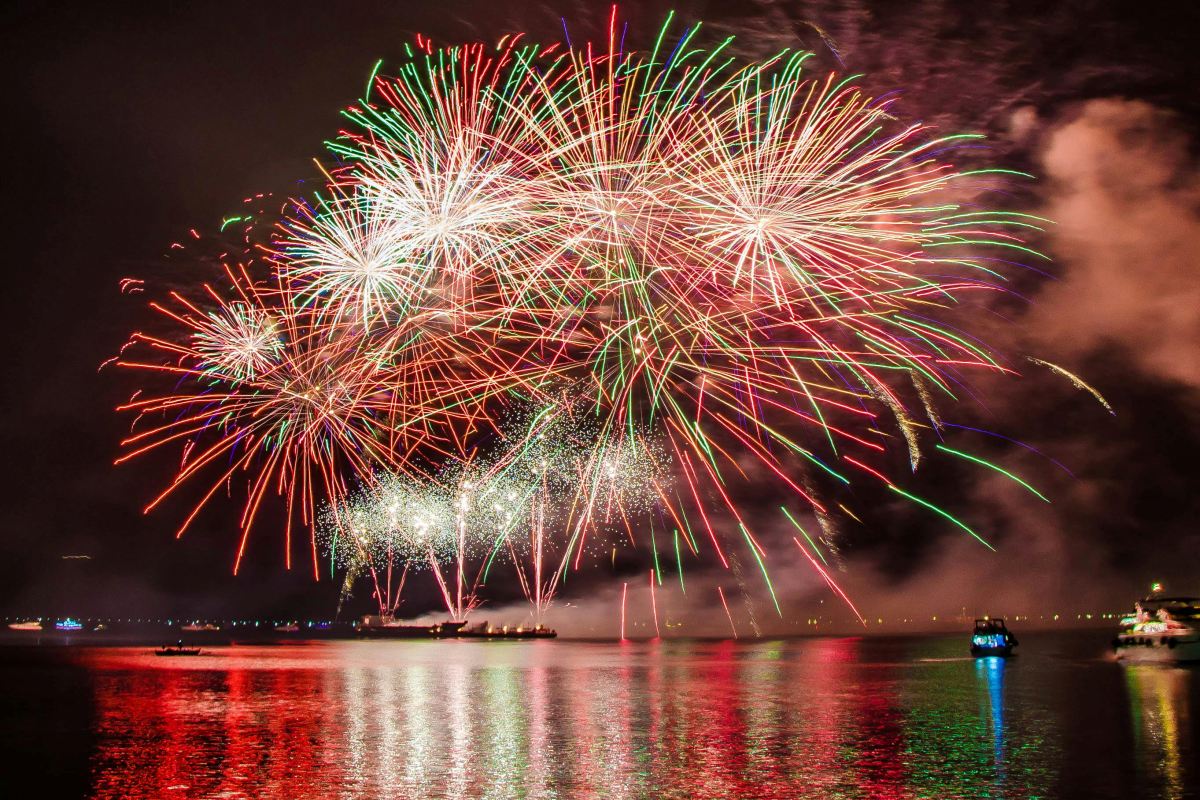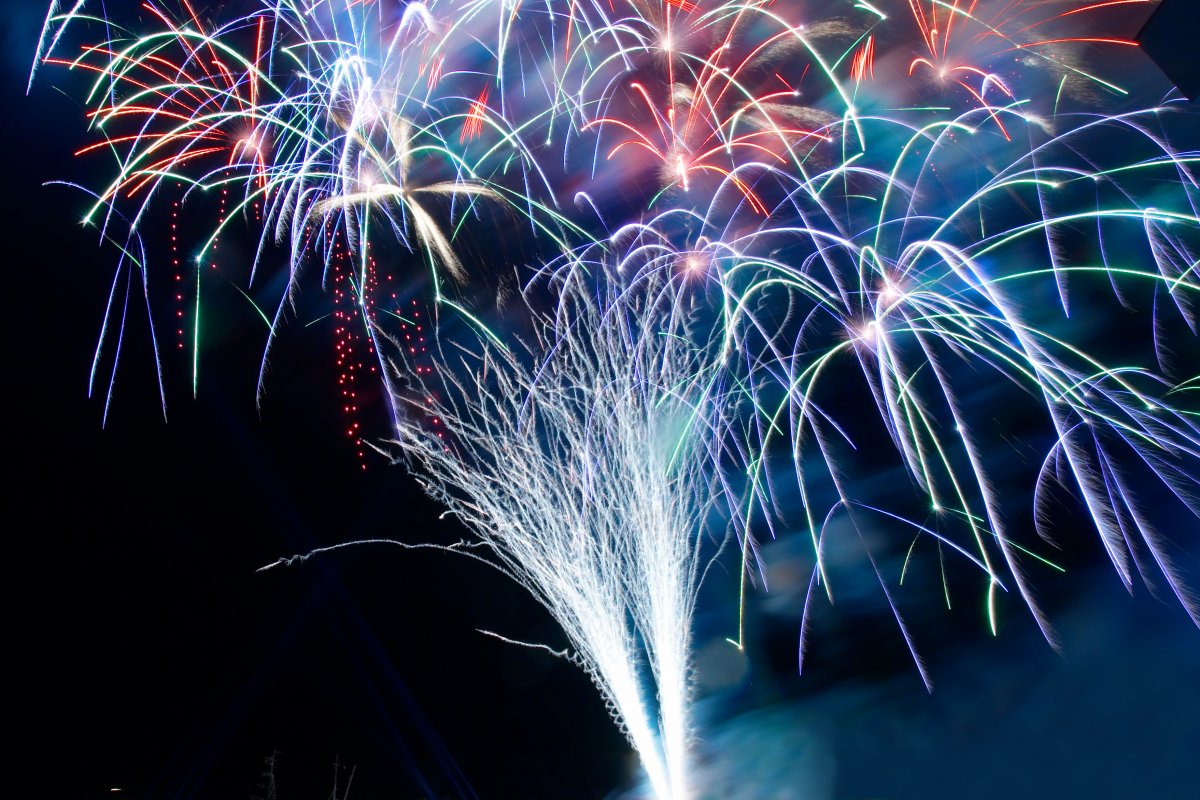Fireworks have always been a centerpiece of celebration, creating breathtaking visuals that light up the night sky.
But have you ever wondered what makes those brilliant red explosions so spectacular? The answer lies in a special metal ion.
In this article, we’ll dive into the science of which metal ion is responsible for the red firework and explore how different metal ions contribute to the vibrant colors we all love.
Red fireworks, in particular, rely on the power of strontium—a chemical element that plays a pivotal role in producing that fiery red hue.
Let’s take a deeper look into how strontium and other metal ions create those mesmerizing firework displays.
What this article covers:
- How Metal Ions Produce Firework Colors
- Why Strontium Is the Star of Red Fireworks
- Lithium: An Alternative to Strontium
- Challenges in Producing Red Colors in Fireworks
- Safety and Environmental Considerations
How Metal Ions Produce Firework Colors
The stunning colours in fireworks are the result of precise chemical reactions involving metal ions. When a firework explodes, the metal compounds packed inside are exposed to intense heat.
This heat excites the electrons in the metal ions, causing them to jump to higher energy levels. As the electrons return to their original state, they release energy in the form of light.
The wavelength of this light determines the colour we see—and each metal emits a unique colour based on its atomic structure.
For example, strontium ions produce a brilliant red, copper gives off blue or green, and sodium creates a bright yellow.
These colours aren’t random—they're tied to the specific way each element’s electrons react to heat.
This fascinating interplay between chemistry and physics allows pyrotechnicians to craft dazzling displays using carefully selected metal salts.
Whether it’s deep reds, vibrant greens, or electric blues, it all comes down to the science of how metal ions behave when ignited.
Overview of Metal Ions and Their Associated Colors
Each metal ion produces a unique color when heated. Here’s a quick overview of some common metal ions and the colors they produce:
- Strontium: Produces a bright, rich red.
- Copper: Produces blue and green hues, in case you were curious about what makes fireworks blue.
- Sodium: Produces a bright yellow.
- Barium: Produces green.
- Calcium: Creates orange.
- Magnesium: Provides white sparks.
These elements and their compounds are carefully selected by pyrotechnicians to create a wide range of colors that light up the sky during firework shows.
Why Strontium Is the Star of Red Fireworks
When it comes to creating the bold, fiery red bursts that define many fireworks displays, strontium is the metal of choice.
This alkaline earth metal is known for its ability to produce a deep, vibrant red flame when heated, making it a staple in the pyrotechnics industry.
Its rich hue is not only visually striking but also incredibly stable—ideal for large-scale and professional-grade firework shows.
One of strontium’s standout properties is its relatively low combustion temperature, which allows it to burn efficiently and consistently without requiring extreme heat.
This makes it easier to control in fireworks production and helps ensure the red color remains vivid from ignition to explosion.
In pyrotechnics, strontium is typically used in the form of strontium carbonate (SrCO₃) and strontium nitrate (Sr(NO₃)₂).
These compounds are prized for their clean-burning characteristics and their ability to maintain colour purity even in complex firework effects.
Strontium salts also provide a longer-lasting glow, helping red fireworks stand out as some of the most visually impactful in any display.
Thanks to its reliability, intensity, and colour quality, strontium remains the go-to metal for red fireworks—earning its title as the undisputed star of red pyrotechnics.

Lithium: An Alternative to Strontium
While strontium is the primary metal used to produce bold red fireworks, lithium offers an alternative for creating lighter, more delicate red hues.
Lithium compounds, such as lithium carbonate (Li₂CO₃), can emit a bright red colour when heated, though the result is typically less intense than strontium’s deep crimson.
Because of this, lithium is used more selectively in pyrotechnics, often when a softer red tone is desired or to create variations in multi-effect displays.
Though not as commonly used, lithium adds valuable flexibility for firework designers aiming for colour variety.
Challenges in Producing Red Colors in Fireworks
Producing a rich, stable red in fireworks isn’t as simple as just using strontium. There are several challenges that pyrotechnicians face when trying to achieve the perfect red explosion.
Stability and Temperature Sensitivity of Strontium Compounds
One of the biggest challenges in creating red fireworks is ensuring that the strontium compounds remain stable at high temperatures.
Strontium salts can be sensitive to temperature fluctuations, which can sometimes affect the intensity and consistency of the red color.
Pyrotechnicians must carefully control the temperature to maintain the desired hue throughout the firework’s burn time.
Achieving Desired Red Hues in Various Firework Effects
In addition to temperature sensitivity, achieving the perfect red hue in various firework effects can be challenging.
Whether it's a shimmering red spark or a massive red burst, the exact composition of the strontium compounds must be adjusted to match the desired effect.
This requires a deep understanding of pyrotechnic chemistry and precise control over the ingredients used.

Safety and Environmental Considerations
While red fireworks are beautiful to watch, it's important to remember that safety and environmental impact are key considerations when working with pyrotechnics.
Handling and Storage of Strontium and Lithium Compounds
Both strontium and lithium compounds need to be handled with care.
These compounds can be hazardous if not stored and used properly, and strict safety guidelines must be followed during their manufacturing and use.
Pyrotechnicians must ensure that these compounds are stored in safe, controlled environments to prevent accidents.
Environmental Impact of Metal-Based Colorants
The environmental impact of using metal-based colorants in fireworks is another consideration.
The heavy metals found in some of these compounds can have negative effects on the environment if not disposed of properly.
As the pyrotechnics industry evolves, there is a growing focus on minimizing these impacts by developing more eco-friendly alternatives.
Conclusion
Strontium’s ability to produce a bold, fiery red makes it the go-to choice for creating the vibrant red hues we see in fireworks.
This remarkable metal ion ensures that each firework display delivers the deep, captivating reds that make a celebration unforgettable.
While there are alternatives like lithium, they don’t quite match the intensity and reliability of strontium. When it comes to achieving a stunning red firework, strontium is the undeniable star.
At Red Apple Fireworks, we pride ourselves on offering a wide selection of top-quality fireworks that feature beautiful colors, incredible effects, and guaranteed safety.
If you're looking for spectacular fireworks to go with your next special occasion or holiday, look no further than our mortar fireworks and sparklers fireworks collections.
Whether you're hosting a grand event or enjoying a quiet evening with family, we have something for everyone.
Join Club Red Apple® today and unlock exclusive benefits that’ll take your fireworks game to the next level. With our membership, you can save up to 25% on your next purchase—so why wait?
Take advantage of the best deals, premium products, and expert advice all year round. Explore our website now and start planning your next unforgettable firework display!
If you want to learn more, check out these articles below:
- What Element Makes Purple Fireworks
- What Element Will Give Fireworks Their Yellow Color
- When Were Fireworks Invented?
- First American Fireworks
- Facts About Fireworks
- Why Do Celebrate with Fireworks?
- Why Were Fireworks Important in Ancient China?
- How Does a Firework Work?
- What Chemicals Are Used In Fireworks?
- What Minerals Are Used to Make Gold Sparks Fireworks?
- What Three Processes Cause Fireworks to Emit Light?
- What Problem Occurs If the Firework Mixture Is Not Pure?














Leave a comment
All comments are moderated before being published.
This site is protected by hCaptcha and the hCaptcha Privacy Policy and Terms of Service apply.